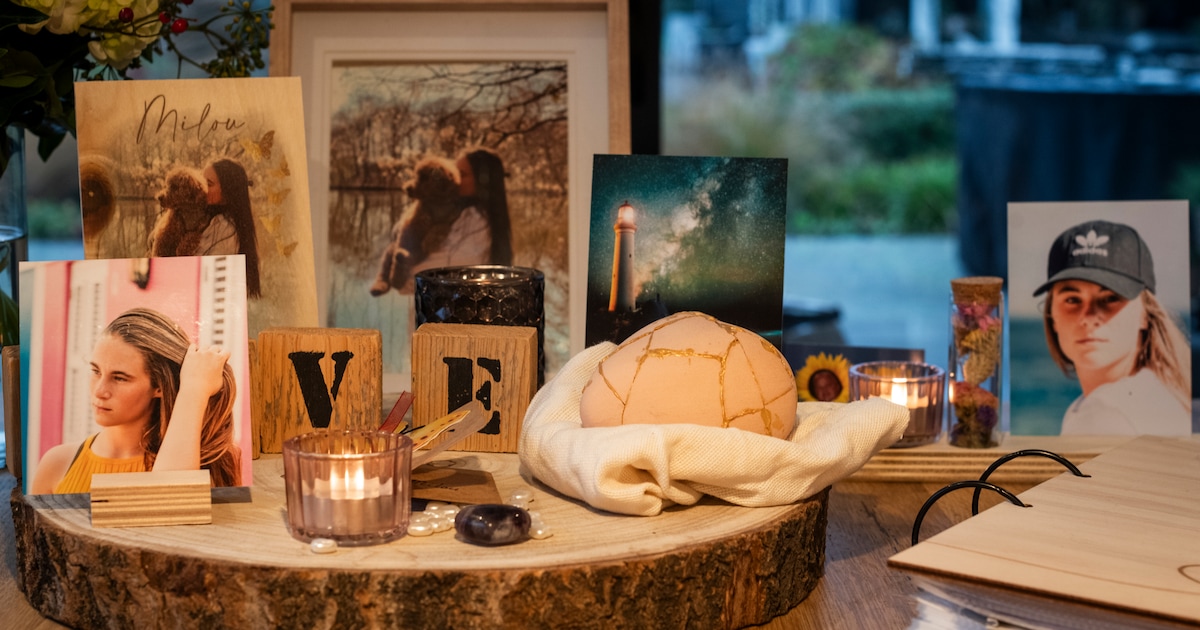
PPsychiatrist Jim van Os doubts that a 17-year-old could make a well-considered decision to end his life (Opinion, June 26). If not, it is an obsessive conviction that death is the only way out. He also claims that euthanasia is the path chosen with least resistance because society or mental health care is failing.
The Euthanasia Act was introduced to provide the opportunity to say goodbye to life in a humane way. The Act does not discriminate against hopeless physical or “mental” suffering and is not just for adults. Such a young age is exceptional. This requires, of course, extra caution.
Snowy
My 17-year-old daughter died in October 2023 by euthanasia. To our knowledge, Milou was the first and only 17-year-old in the Netherlands to die by euthanasia due to desperate psychological suffering. Exceptionally, all Regional Euthanasia Review Committees (RTE) have, due to her young age, considered the implementation of the legal due diligence criteria. Her otherwise public opinion describes that the doctor who examined her and accompanied her in the euthanasia process, treated her request with great caution and care. That his assessment of how unbearable her suffering was met all the conditions. In this she was supported by doctors and ethicists. There was even an expert on existential issues involved.
Van Os doubts the validity of the persistent wish for death. This hurts us. Van Os does not know our daughter’s file. RTE and the experts ruled that she was mentally competent and aware of what she was asking. She made her decisions carefully and had done everything in her power.
Monster in his head
The insinuation that euthanasia was “a medical solution” for her seems to me like a stab in the back, a “more attractive” option than working on recovery. She has struggled for years and has been in survival mode. She worked very hard, as did the emergency services and our family. When her son can no longer live life, despite maximum connection and intensive support to alleviate suffering, she always expects that the appropriate treatment will be provided. Milou turns in her grave when she hears that it is now written that in her case the easy way would have been taken. She made the greatest sacrifice imaginable to put an end to the mental pain, to the monster in her head. The road there was hell. Talk of ‘not being heard’, ‘not speaking the language’ and ‘replacing another person’.
She called for recognition for years. Suicidal thoughts, attempts and fear of successful suicide did not stop. Suicide rates over the past decade of a 17 percent increase among people aged 30 and under were not something we could turn a blind eye to. That option loomed over us every day. It is not a long, winding road as Van Os describes it, but one with deep, often huge potholes. sinks and road closures. Without good “roadside assistance” you will be nowhere in Dutch mental health care if your car breaks down.
The suggestion that we killed her is offensive. I don’t know who else would have been able to bear and endure her mental pain other than all the people who judged and treated her. The rinsing became increasingly scarce: she was no longer allowed to participate in many treatments and even scientific research because of her active desire for death and her dependence on substances.
An empathetic and inclusive mental health care system does not turn its back when someone, even a very young person, has the courage to say after years of struggle that it is unbearable. “There is no mental modality of psychological suffering. We forget to do that,” Van Os wrote the day after her op-ed. Fidelity on social media in response. But please, let’s not wait until “describing what psychological suffering is” is included in the agenda of future research, but let’s listen together now. We must engage in conversation and connect without judgment with the person experiencing unbearable suffering.
The road to recovery
RTE also published its opinion on the euthanasia of our daughter for social reasons. “To serve as a learning opportunity for doctors and for social debate,” they wrote. I would like to invite psychiatrist Van Os for an interview.
Certainly, experts and experienced practitioners together can learn to speak the language that corresponds to psychological suffering. They can offer hope and perspective to people with persistent suicidal tendencies or desperate psychological suffering. Because, fortunately, many people who are in very deep psychological distress can once again embark on that path to recovery. But sometimes “helping” also means daring to realize that someone really can no longer bear treatment.
Read also:
Opinion: Psychiatrist Jim van Os: Offering euthanasia to young people ignores their psychological suffering
A society in which “success is a choice” further marginalises vulnerable young people, writes professor and psychiatrist Jim van Os.
Milou (17) was granted euthanasia: “Why are people with cancer who have completed treatment allowed to die, but not me?”
For the first time, a child has been euthanized for severe psychological distress. Milou’s parents speak about his suffering and his wish to die. “Why was this not allowed to exist in youth care?”